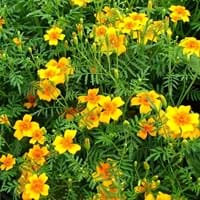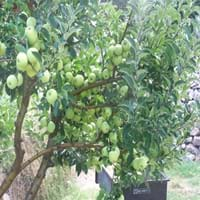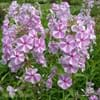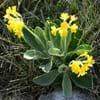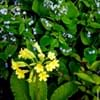Life Span
Annual
Perennial
Type
Flowering Plants, Shrubs
Fruit
Origin
Central America, Colombia, Mexico
Hybrid origin
Types
Not Available
Not available
Number of Varieties
Not Available
Habitat
Roadsides, wastelands
Hillside, Mountain Slopes, Temperate Regions
USDA Hardiness Zone
9-11
5-8
AHS Heat Zone
Not Available
9-1
Sunset Zone
Not Available
7, 8, 9, 10, 11, 14, 15, 16
Habit
Upright/Erect
Oval or Rounded
Flower Color
Orange, Yellow
White
Flower Color Modifier
Bicolor
Bicolor
Fruit Color
Not Available
Light Green
Leaf Color in Spring
Green
Green
Leaf Color in Summer
Dark Green
Green
Leaf Color in Fall
Dark Green
Green
Leaf Color in Winter
Dark Green
Light Green
Leaf Shape
Toothed
Oblong
Plant Season
Fall, Spring, Summer
Spring, Fall
Sunlight
Full Sun, Part sun
Full Sun, Partial Sun
Growth Rate
Very Fast
Medium
Type of Soil
Loamy, Sandy, Well drained
Clay, Loam, Sand
The pH of Soil
Neutral, Slightly Alkaline
Acidic, Neutral
Soil Drainage
Well drained
Well drained
Bloom Time
Early Fall, Early Summer, Fall, Late Fall, Late Summer, Summer
Early Spring, Spring
Tolerances
Drought
Drought
Where to Plant?
Container, Ground, Pot
Ground
How to Plant?
Seedlings
Grafting, Seedlings, Transplanting
Plant Maintenance
Medium
Medium
Watering Requirements
Allow soil to be completely dry in between waterings, Form a Soil ring to water efficiently, Keep the ground moist but not water-logged, Water in morning to avoid prompting diseases, Water when soil is dry
Medium
In Summer
Lots of watering
Lots of watering
In Spring
Moderate
Moderate
In Winter
Average Water
Average Water
Soil pH
Neutral, Slightly Alkaline
Acidic, Neutral
Soil Type
Well drained
Clay, Loam, Sand
Soil Drainage Capacity
Well drained
Well drained
Sun Exposure
Full Sun, Part sun
Full Sun, Partial Sun
Pruning
Prune ocassionally, Remove dead or diseased plant parts, Requires little pruning
Remove damaged leaves, Remove dead branches, Remove dead leaves
Fertilizers
All-Purpose Liquid Fertilizer
All-Purpose Liquid Fertilizer
Pests and Diseases
Alternaria Leaf Spot, Bacterial leaf spot, Damping-off, Gray mold, Powdery mildew, Root rot
Black rot, Leaf spot, Scab
Plant Tolerance
Drought
Drought
Flower Petal Number
Single
Single
Fragrant Bark/Stem
Yes
No
Foliage Texture
Fine
Medium
Foliage Sheen
Matte
Matte
Attracts
Butterflies
Not Available
Allergy
Asthma, Eye irritation, Red eyes, Runny nose, Throat itching, Watery eyes
Mouth itching, Throat itching
Aesthetic Uses
Showy Purposes
Not Used For Aesthetic Purpose
Beauty Benefits
Not Available
Not Available
Environmental Uses
Air purification
Air purification
Medicinal Uses
Burns, constipation, Inflammation, Upset stomach, Wounds
Cancer, constipation, Diabetes, Diarrhea, Dysentry, Fever, Heart problems, Tooth ache
Part of Plant Used
Flowers, Seeds
Fruits
Other Uses
Food for animals, Food for insects, Used As Food, Used for its medicinal properties
Used As Food, Wood is used for making furniture
Used As Indoor Plant
No
No
Used As Outdoor Plant
Yes
Yes
Garden Design
Bedding Plant, Edging, Foundation, Houseplant, Mixed Border
Edible, Feature Plant, Fruit / Fruit Tree, Topiary / Bonsai / Espalier
Botanical Name
Tagetes tenuifolia
MALUS domestica 'Granny Smith'
Common Name
signet marigold, golden marigold
Apple, Granny Smith Apple, Green Cooking Apple, Green Eating Apple
In Hindi
गोल्डन गेंदा
Granny Smith
In German
Schmalblättrige Studentenblume
Granny Smith
In French
Tagète citron
Granny Smith
In Spanish
Tagetes tenuifolia
Granny Smith
In Greek
χρυσή κατιφέ
Granny Smith
In Portuguese
calêndula ouro
Maçã-verde
In Polish
Aksamitka wąskolistna
Jabłoń domowa 'Granny Smith'
In Latin
caltha
Granny Smith
Phylum
Tracheophyta
Magnoliophyta
Class
Magnoliopsida
Magnoliopsida
Family
Asteraceae
Rosaceae
Clade
Not Available
Angiosperms, Eudicots, Rosids
Tribe
Not Available
Not Available
Subfamily
Not Available
Not Available
Number of Species
Not Available
Importance of Golden Marigold and Granny Smith Apple
Want to have the most appropriate plant for your garden? You might want to know the importance of Golden Marigold and Granny Smith Apple. Basically, these two plants vary in many aspects. Compare Golden Marigold and Granny Smith Apple as they differ in many characteristics such as their life, care, benefits, facts, etc. Every gardener must at least have the slightest clue about the plants he wants to plant in his garden. Compare their benefits, which differ in many ways like facts and uses. The medicinal use of Golden Marigold is Burns, constipation, Inflammation, Upset stomach and Wounds whereas of Granny Smith Apple is Cancer, constipation, Diabetes, Diarrhea, Dysentry, Fever, Heart problems and Tooth ache. Golden Marigold has beauty benefits as follows: Not Available while Granny Smith Apple has beauty benefits as follows: Not Available.
Compare Facts of Golden Marigold vs Granny Smith Apple
How to choose the best garden plant for your garden depending upon its facts? Here garden plant comparison will help you to solve this query. Compare the facts of Golden Marigold vs Granny Smith Apple and know which one to choose. As garden plants have benefits and other uses, allergy is also a major drawback of plants for some people. Allergic reactions of Golden Marigold are Asthma, Eye irritation, Red eyes, Runny nose, Throat itching and Watery eyes whereas of Granny Smith Apple have Mouth itching and Throat itching respectively. Having a fruit bearing plant in your garden can be a plus point of your garden. Golden Marigold has no showy fruits and Granny Smith Apple has showy fruits. Also Golden Marigold is flowering and Granny Smith Apple is not flowering . You can compare Golden Marigold and Granny Smith Apple facts and facts of other plants too.
